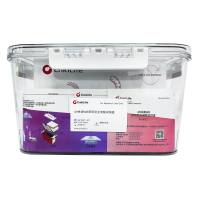Western blotting (reviewed in refs. 1 –3 ) refers to formation and detection of an antibody—antigen complex between an antibody and a polypeptide that is immobilized on denvatized paper. Most commonly, polypeptides in a complex mixture are separated by electrophoresis through polyacrylamide gels in the presence of sodium dodecyl sulfate (SDS), electrophoretically transferred to thin sheets of nitrocellulose or nylon, and reacted sequentially with one or more antibody-containing solutions. This sequence of manipulations can be utilized to determine whether a polypeptide recognized by a specific antiserum is present in a particular biological sample (cell type, subcellular fraction, or biological fluid), to follow the purification of the polypeptide, or to assess the location of epitopes within the polypeptide after chemical or enzymatic degradation. If suitable antibodies are available, this same approach can be utilized to search for proteins that bear a particular physiological or pathological posttranslational modification (e.g., refs. 4 –6 ). Alternatively, the same procedure can be utilized to determine whether antibodies that recognize a particular polypeptide are detectable in a sample of biological fluid. Because Western blotting takes advantage of the power of electrophoresis for separating complex mixtures of polypeptides, it is possible to derive large amounts of information from this technique without necessarily purifying the antigen being studied.






